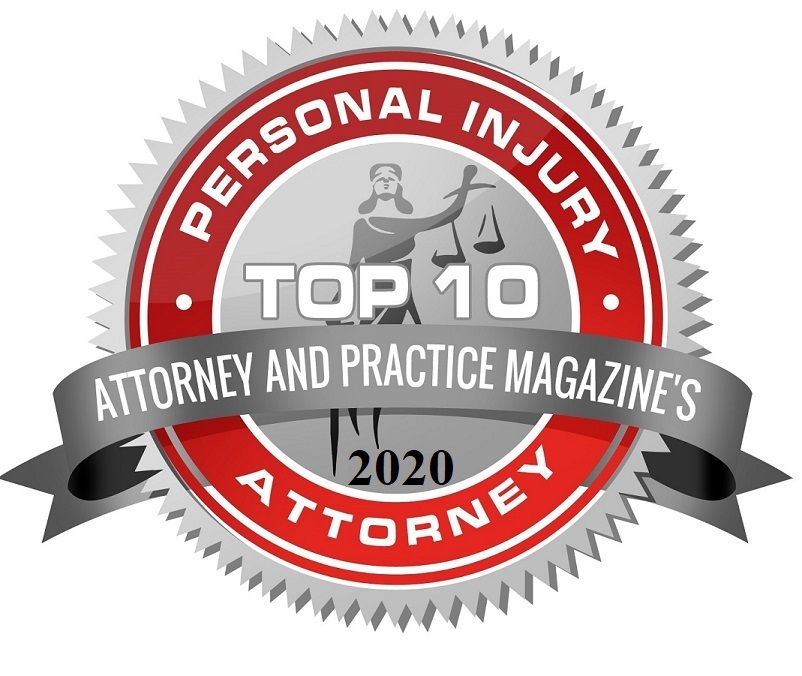Standing is a fundamental legal concept that determines whether an individual or entity has the right to bring a lawsuit in court. In the realm of personal injury law, establishing standing is essential for initiating a claim and seeking compensation for damages resulting from negligence or wrongful conduct.
In this blog post, we’ll explore the three elements of standing to sue in Florida and discuss why each element is crucial for pursuing a successful personal injury case. Understanding these elements is essential for both plaintiffs and their attorneys, as they form the foundation upon which a legal claim is built. Let’s delve into the nuances of standing to sue and its significance in the context of personal injury litigation in Florida.
What is Standing to Sue?
Standing to sue, also known simply as “standing,” refers to the legal right of an individual or entity to initiate a lawsuit in court. In essence, it is the threshold requirement that ensures the party bringing the lawsuit has a sufficient connection to the legal dispute and a stake in the outcome. Without standing, a court lacks jurisdiction to hear the case, and the lawsuit may be dismissed.
In personal injury cases, establishing standing is crucial for several reasons:
Access to Legal Remedies: Standing ensures that individuals who have suffered harm due to the negligence or wrongful actions of others have the opportunity to seek legal remedies and obtain compensation for their injuries.
Judicial Efficiency: By limiting lawsuits to parties with a direct interest in the outcome, standing helps streamline the legal process and prevents frivolous or speculative claims from clogging the court system.
Protection of Defendant’s Rights: Ensuring that plaintiffs have standing to sue protects the rights of defendants by requiring that they be properly notified of the legal action and given an opportunity to defend themselves against the allegations.
In Florida, the following three elements must be established to demonstrate standing to sue in personal injury cases: injury in fact, causation, and redressability. Let’s dive deeper into each one of these elements.
Case Results
Injury in Fact
“Injury in fact” refers to a concrete and particularized harm that a plaintiff has suffered or is likely to suffer as a result of the defendant’s conduct. It is a core requirement for establishing standing to sue in personal injury cases and serves as the basis for demonstrating that the plaintiff has a sufficient connection to the legal dispute and a stake in the outcome. In essence, injury in fact is the actual or imminent injury that gives rise to the plaintiff’s legal claim.
Without demonstrating a concrete harm suffered by the plaintiff, the court lacks jurisdiction to hear the case, and the lawsuit may be dismissed. Injury in fact is often closely linked to the concept of damages in personal injury cases. It serves as the basis for calculating the compensation to which the plaintiff may be entitled, including medical expenses, lost wages, pain and suffering, and other economic and non-economic losses.
Evaluating “Injury in Fact” in Florida Courts
In Florida, courts evaluate injury in fact based on the specific facts and circumstances of each case. Factors that may be considered include:
Nature and Extent of the Harm: Courts assess the severity and scope of the plaintiff’s injuries or losses to determine whether they meet the threshold for injury in fact. This may involve medical evidence, witness testimony, and other relevant documentation.
Immediacy and Certainty of the Harm: Courts consider whether the harm suffered by the plaintiff is actual or imminent, rather than speculative or hypothetical. The harm must be sufficiently immediate and certain to establish injury in fact.
Traceability to Defendant’s Conduct: Plaintiffs must demonstrate a direct connection between the defendant’s actions or omissions and the harm they have suffered. This requires showing that the defendant’s conduct was a substantial factor in causing the plaintiff’s injuries or losses.
Injury in fact is a fundamental element of standing to sue in personal injury cases, serving as the basis for establishing a plaintiff’s legal right to bring a lawsuit against negligent parties. By understanding the concept of injury in fact and how it is evaluated in Florida courts, plaintiffs and their attorneys can effectively navigate the legal process and pursue justice for injuries caused by the wrongful actions of others.
Multi-Collision Car AccidentClient Testimonial
Causation
Causation is a critical element of standing to sue in personal injury cases, as it establishes the link between the defendant’s actions or omissions and the plaintiff’s injuries.
What is Causation?
Causation, in the context of personal injury law, refers to the legal principle that a defendant’s actions or negligence must be a substantial factor in causing the plaintiff’s injuries or damages. It involves demonstrating a direct and foreseeable connection between the defendant’s conduct and the harm suffered by the plaintiff. Causation is typically divided into two components: cause in fact and proximate cause
Cause in Fact: Cause in fact — also known as actual cause — focuses on whether the defendant’s actions were a factual cause of the plaintiff’s injuries. In other words, would the plaintiff’s injuries have occurred “but for” the defendant’s conduct? If the answer is yes, then the defendant’s actions are considered a cause in fact of the plaintiff’s injuries.
Proximate Cause: Proximate cause — or legal cause — involves assessing whether the defendant’s conduct was a foreseeable and natural consequence of the harm suffered by the plaintiff. It considers whether the defendant should be held legally responsible for the consequences of their actions, even if there are intervening factors or events that contribute to the plaintiff’s injuries.
Causation plays a crucial role in standing to sue for several reasons.
Establishing Liability: Causation is essential for proving that the defendant’s actions or negligence directly resulted in the plaintiff’s injuries. Without establishing causation, the plaintiff cannot hold the defendant legally responsible for their damages.
Ensuring Fairness: Causation serves to ensure fairness and accountability in personal injury cases by linking the defendant’s conduct to the harm suffered by the plaintiff. It prevents individuals from being held liable for injuries that they did not cause or could not reasonably foresee.
Guiding Legal Remedies: Causation helps determine the appropriate legal remedies available to the plaintiff, including compensation for medical expenses, lost wages, pain and suffering, and other damages directly resulting from the defendant’s conduct.
Evaluating Causation in Florida Courts
In Florida, courts evaluate causation based on the specific facts and circumstances of each case. Factors that may be considered include:
Direct Evidence: Courts may consider direct evidence, such as witness testimony, expert opinions, and documentary evidence, to establish the causal link between the defendant’s actions and the plaintiff’s injuries.
Proximate Cause Analysis: Courts analyze whether the defendant’s conduct was a foreseeable and natural cause of the plaintiff’s injuries, considering factors such as foreseeability, intervening events, and the extent of the defendant’s liability.
Precedent and Case Law: Courts may rely on precedent and established case law to determine whether the plaintiff has met the burden of proving causation in accordance with legal standards and principles.






Redressability
The final element, redressability refers to the plaintiff’s ability to obtain a remedy or relief from the court for the harm they have suffered.
What is Redressability?
Redressability is the plaintiff’s ability to obtain a remedy or relief from the court that can effectively address the harm they have suffered. It is a critical component of standing to sue, as it ensures that the plaintiff’s legal claim is capable of providing meaningful relief and addressing the consequences of the defendant’s actions or negligence. Redressability is significant in standing to sue for several reasons:
Ensuring Access to Justice: Redressability ensures that individuals who have suffered harm due to the wrongful actions of others have access to the legal system and the opportunity to seek remedies for their injuries. Without redressability, plaintiffs would be unable to obtain relief for the harm they have suffered, leading to a lack of accountability for the defendant’s conduct.
Guiding Legal Remedies: Redressability helps determine the appropriate legal remedies available to the plaintiff. This may include monetary damages for medical expenses, lost wages, pain and suffering, and other economic and non-economic losses resulting from the defendant’s actions.
Providing Closure and Compensation: Redressability allows plaintiffs to seek closure and compensation for the harm they have suffered, helping them move forward with their lives and recover from the consequences of the defendant’s negligence or misconduct.
Choosing The Right Personal Injury Attorney Personal Injury Settlement TimelineRelated Videos
Evaluating Redressability in Florida Courts
In Florida, courts evaluate redressability based on the specific facts and circumstances of each case. Factors that may be considered include:
Availability of Legal Remedies: Courts assess whether there are legal remedies available that can effectively address the harm suffered by the plaintiff. This may involve considering the nature and extent of the plaintiff’s injuries and the types of relief sought in the legal claim.
Ability to Provide Relief: Courts evaluate whether the relief sought by the plaintiff is within the court’s authority to grant and whether it can effectively redress the harm suffered by the plaintiff. This may involve assessing the feasibility and practicality of the requested relief.
Connection to Defendant’s Conduct: Courts consider whether the relief sought by the plaintiff is directly linked to the defendant’s actions or negligence and whether holding the defendant accountable will provide meaningful redress for the harm suffered by the plaintiff.
From Standing to Sue to Fighting for You
If you have suffered a personal injury and your case contains all three elements of standing to sue — injury in fact, causation, and redressability you may be entitled to damages.
Serrano Law is dedicated to advocating for you with passion and professionalism. Contact our office in Lutz, FL today to schedule your free consultation, and fight for what you deserve.



